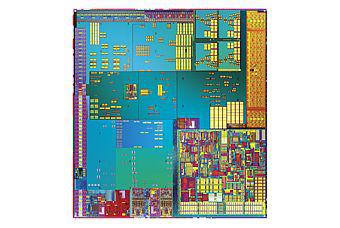Filed under: Investing
Although we don't believe in timing the market or panicking over market movements, we do like to keep an eye on big changes -- just in case they're material to our investing thesis.
What: Shares of biotechnology firm Ariad Pharmaceuticals, surged 40% today after European regulators recommended the continued use of its leukemia drug Iclusig.
So what: The stock plummeted last month after the U.S. Food and Drug Administration temporarily suspended sales of Iclusig due to blood clot risks, so today's favorable decision by the European Medicines Agency's Committee for Medicinal Products for Human Use naturally comes as a massive relief to investors. Of course, as my Foolish colleague Sean Williams noted after Ariad's big Halloween plunge, Iclusig's potential toxicity raises plenty of uncertainty over its adoption rate going forward.
Now what: Management remains positive about Iclusig's prospects.
"The conclusions reached by the CHMP, which were announced today, confirm a positive benefit-risk assessment for Iclusig after considering the most recent safety information," said Ariad's general manager in Europe, Jonathan Dickinson. "We expect that this will provide helpful guidance for patients and health care professionals as they consider the treatment options."
So while Ariad certainly remains too speculative for average investors, today's positive news, coupled with the fact that the shares remain well off their 52-week high, make the stock an interesting opportunity for biotech-savvy Fools.
More reliable ways to wealth
Dividend stocks can make you rich. It's as simple as that. While they don't garner the notoriety of high-flying growth stocks, they're also less likely to crash and burn. And over the long term, the compounding effect of the quarterly payouts, as well as their growth, adds up faster than most investors imagine. With this in mind, our analysts sat down to identify the absolute best of the best when it comes to rock-solid dividend stocks, drawing up a list in this free report of nine that fit the bill. To discover the identities of these companies before the rest of the market catches on, you can download this valuable free report by simply clicking here now.
The article Why Ariad Pharmaceuticals Inc. Skyrocketed originally appeared on Fool.com.
Fool contributor Brian Pacampara has no position in any stocks mentioned. The Motley Fool has no position in any of the stocks mentioned. Try any of our Foolish newsletter services free for 30 days. We Fools may not all hold the same opinions, but we all believe that considering a diverse range of insights makes us better investors. The Motley Fool has a disclosure policy.Copyright © 1995 - 2013 The Motley Fool, LLC. All rights reserved. The Motley Fool has a disclosure policy.
Read | Permalink | Email this | Linking Blogs | Comments















